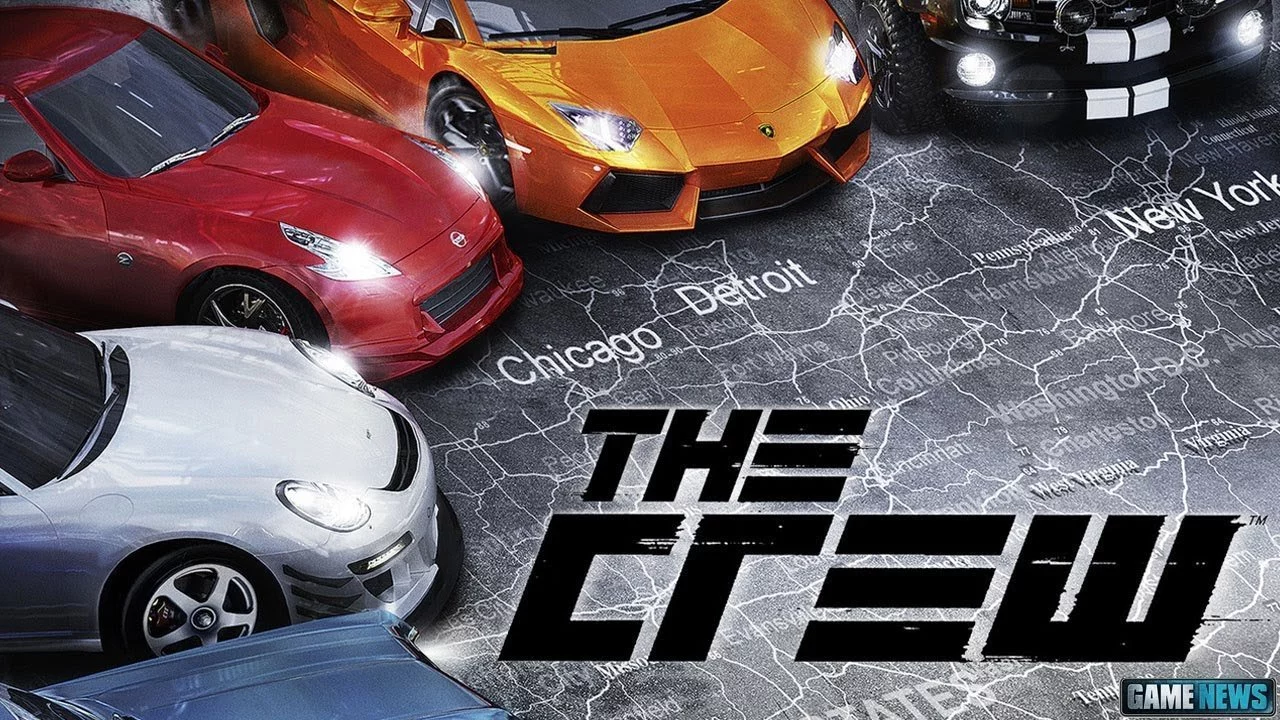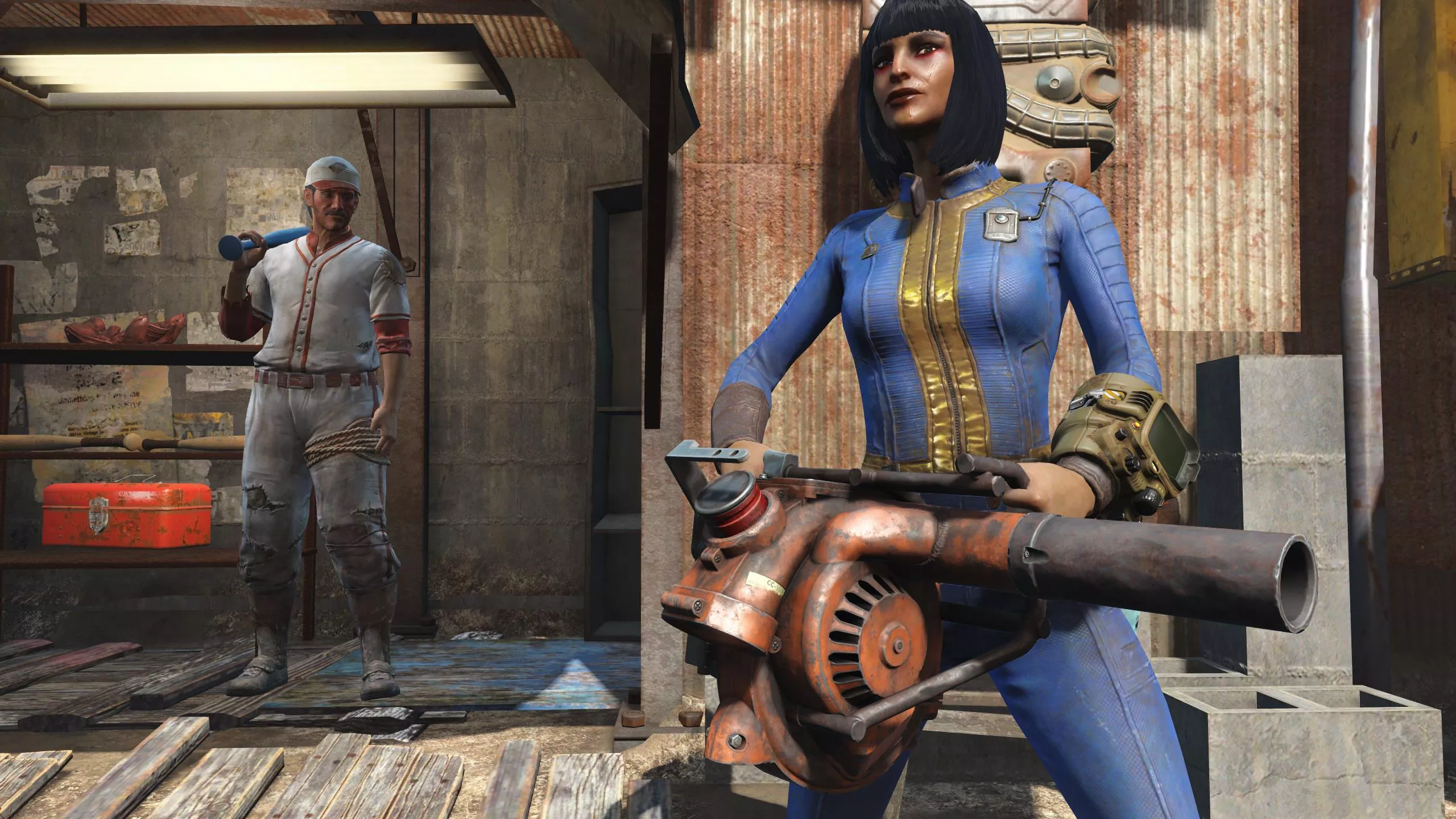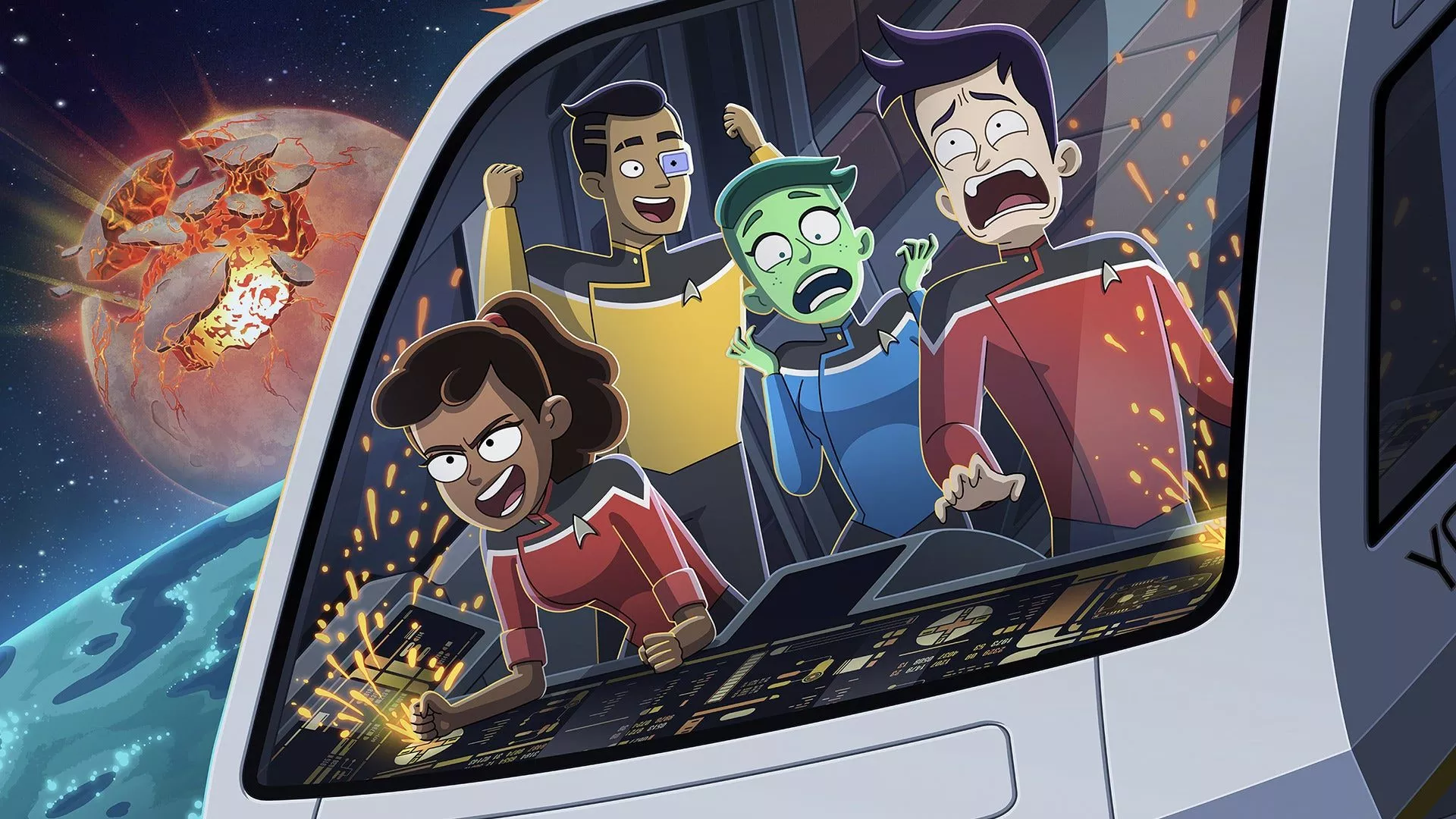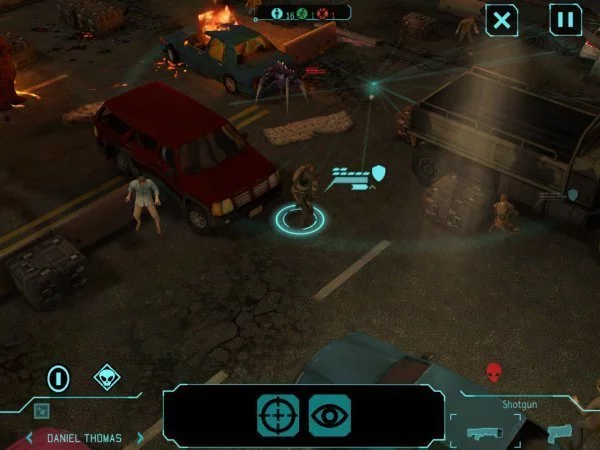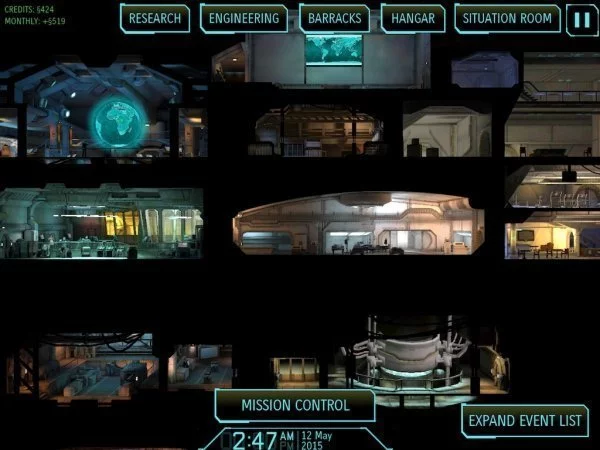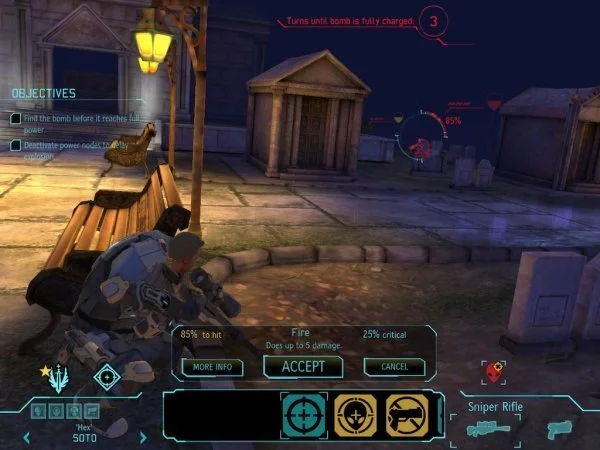2K recently released XCOM: Enemy Unknown on iOS, and it’s almost 1:1 with the game’s 2012 release on PC and consoles. In short, it’s fantastic.
The game looks a little worse than it does on consoles, but that’s to be expected since the game has been condensed into mobile form. The downgraded visuals are barely noticable however; textures pop-in at times, and things like explosions don’t have the same oomph that they once did, but you’ll forget about those little issues extremely quickly.
Moreover, the title is down a couple maps, customisation options for soldiers and multiplayer features (though the latter will be added into the iOS version for free down the track), but ultimately, it controls better than its 2012 brethren. Why? COME ON. A game like XCOM is perfect for the touch controls of the iPad. It’s so much easier to point and direct your squad, and navigating around the map is a breeze with pinch controls than can zoom in and out and spin it. The controls are so good that I’m quite happy upping our original 9/10 review for this game (on consoles, of course) to a 9.5 on iPad.
For me, the difficulty of the game — even on easy — is ridiculous at times, but I’m chalking that up to my ineptitude at strategy games rather than a fault of the title itself.
At $20 AUD, the title is a bit on the pricey side, but compared to other games in the mobile space, it’s a steal for the amount of content you’re getting. It’s perfect for those who didn’t have a chance to get into the original 2012 release — as you’re pretty much getting the same game, with better controls, at a reduced rate — or huge fans of the XCOM series. Before you buy, though, just be aware that the game will only work with iPad 2 and up, iPad mini, iPod touch 5 and up and iPhone 4S and up.
Now that the iOSness of the game is out of the way, here’s a slightly revised version of Greg’s original review:
During my formative years, there was one game in particular that took up a hell of a lot of my time — UFO: Enemy Unknown. There are many that would argue that it’s sequel, X-COM: Terror from the Deep, was a better game; however, I always found the setting in UFO far more enjoyable. I hate underwater levels, you see…
Following these very popular titles were a few fairly unremarkable releases, none of which received any kind of critical acclaim. Although I tried one or two of these titles, I had thought my love for the X-COM series had died. I moved on with my life, got married, and had some kids.
Well, turns out I was wrong. On finally pulling my head up through the filth in my home, pushing my way through my screaming, neglected, and malnourished family, I realised I had a problem. And that problem was XCOM: Enemy Unknown, the series reboot developed by Firaxis Games.
This new title keeps with the style and theme of the original, which was a turn-based strategy game played out from a 3D isometric perspective, with some resource management thrown in for good measure. Gameplay has been tightened up, but the primary drivers remain the same – an alien invasion has begun across the globe, and the XCOM project is all that is available to combat the threat, with support from nations across the planet.
Players assume the role of an unnamed Commander (aka, insert your name here), and the game begins with some simple tutorial levels to assist with the mechanics. Still, the game pulls no punches even this early in the game – on following the instructions in the first level, all but one of a squad sent to investigate an anomaly comes back alive. Take this as an early warning – XCOM is hard. Soldiers will die.
Following this level, gameplay switches to the base, which is where the resource management sections are played out. After selecting a location for your base (initially from only two options – Europe or America, but if you do choose to skip the tutorial, you can select from 5 base locations), the player’s hand is held as they are walked through selecting Research (to discover new technology), initialising Engineering tasks (to build new facilities, machines, or newly discovered technology), managing soldiers, and monitoring world status.
Slowly, and almost imperceptibly, control over the player is released as less and less advice is given. This is both a good and a bad thing – eventually the fate of the world is left entirely in the hands of the Commander, which is great; however, it is very important to note that a couple of missteps can lead to total and complete failure. You have been warned.
Really, this is one of my biggest issues – it is really quite easy to make silly mistakes and put the project behind the 8 ball. Certain research and engineering prjects are classed as priorities throughout the game, which limits capabilities in terms of researching or building anything else. Further, as panic levels rise in certain countries (panic is a mechanic used to display how satisfied a country is with the XCOM project – once things get out of hand, whole countries will withdraw from the project), they may withdraw their funding, reducing further capabilities. Overall, it’s a really complex and engaging aspect of the game, but I would have preferred advanced warning that making the wrong decisions could end the game entirely (in the interests of transparency, I reloaded old saves on more than one occasion in order to right some poor decisions).
For me, though — and likely for most players – the real beauty of the game lies in the strategy missions. The Commander can select a Squad of up to 6 units, each with their own strengths and weaknesses — a Heavy unit also carries a rocket launcher, while a Sniper can exact more damage from longer distances, for example. Each unit increases in level over time, at which point, the Commander can choose from certain perks, essentially making each soldier their own crafted character within the XCOM universe… and herein lies the beauty.
Given that it takes SO LONG to get a character up to a point where they’re actually useful in a firefight (for example, a low-level sniper can only shoot OR move in a single turn, whereas a higher level can do both), I did find myself growing attached to certain soldiers. The ability to rename them also means you can personalise things – but careful! They will almost certainly die. Still, being able to upgrade your favourite soldier with the newest technology and watching him or her level up over time is a wonderful, wonderful aspect of the game. Just don’t be surprised if you are not willing to accept those times that your favourite character is killed by the game. Needless to say, I reloaded autosaves on many, many occasions, and I’m not ashamed.
There really is so much to say about this game, and covering it all would result in a review that would take forever to read — particularly when the bottom line is that you should be playing this game. In short, being able to select your squad, improve technology, redesign your base, map out a plan of attack, kit out each and every soldier to your exact requirements, capture or kill, and watch as your squad either eliminates or is eliminated make this one of the most satisfying titles I’ve played in a long while. It looks pretty as well, and Firaxis have managed to fine tune the gameplay — the original UFO title had you ordering everything, right down to individual magazines for weapons — this title does away with some of that micro management, and focuses on the larger tasks at hand. Again, this doesn’t make things easier, just less frustrating.
It’s not perfect, of course. Some voice samples are repeated far too often (I hated the term “I’ve got my eyes on” the first time I heard it, and it never got any easier to hear). There are some graphical glitches that detract from time to time. It’s relentlessly and unforginvingly difficult at times (although I’m not sure if this is a good or bad thing). The requirement to build facilities is a little unclear and underdeveloped. The environments all look the same, regardless of what country your squad is deployed in. Further, every soldier seems to be American, regardless of where they are from – it would have been nice to have had some culture in there. And I guess finally, as a minor quibble… Why are countries pulling out of the project? If this is the only option available to combat the alien threat, I would have thought the whole world would provide their support, regardless of success. Help me XCOM, you’re our only hope. And so on.
Still, regardless of the issues I’ve outlined above, XCOM is a wonderful title that I found myself unable to stop playing. Even given some missions go on for as long as 90 minutes (although this depends entirely on the player — each location/alien/item is randomly placed), I had to have just ONE MORE TURN. Oh, and when scanning the globe, I hoped to god there were no contacts — not because I didn’t want to shoot some aliens IN THE FACE, but beacuse I had a Plasma Sniper to research. So much tension, so much excitement, so much to do.
It’s not for everyone, of course. If you don’t like strategy games, or turn-based titles, then you might not want to fork out the big bucks. That said, there’s a demo available on Xbox Live, PSN, and PC, so it can’t hurt to try. And if you have even a remote interest in these kinds of games? It’s almost certainly going to make you very happy.
OK. Writing up this review took FAR too much time out of my schedule. I have several missions to catch up on. I’ve got my eyes on, Commander.
Review
 |
The good |
The bad |
Want to know more about our scoring scale?
This article may contain affiliate links, meaning we could earn a small commission if you click-through and make a purchase. Stevivor is an independent outlet and our journalism is in no way influenced by any advertiser or commercial initiative.


